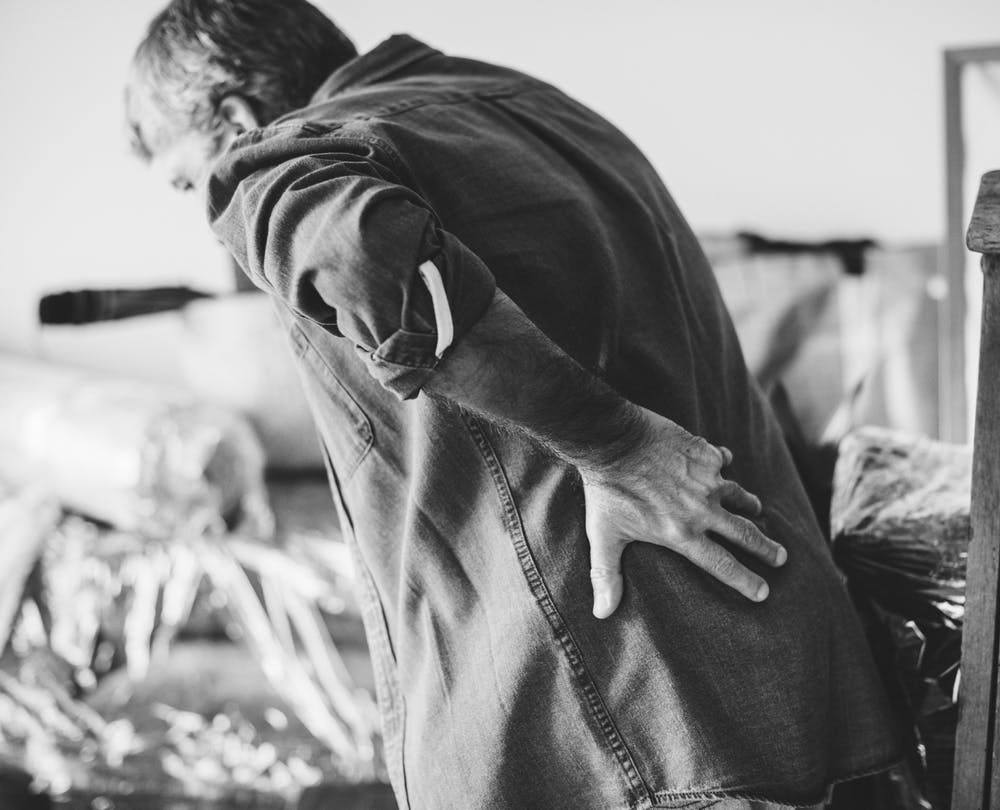nalco group
bone, muscle & joint pain physio
BOOK NOW / WHATSAPP ABOUT YOUR PAIN OR INJURY
- ORCHARD 400 Orchard Road #12-12 Singapore 238875
- TAMPINES 9 Tampines Grande #01-20 Singapore 528735
- SERANGOON 265 Serangoon Central Drive #04-269 Singapore 550265
Home > Blog > Physiotherapy Singapore & Hand Therapy > Understand Your Pain > Pain & Injury
Pain & Injury Physiotherapy Singapore

Pain is an unpleasant sensory and emotional experience that's associated to with potential or real tissue damage, and has both physical and emotional components to it.
Pain...is actually a good thing, and is created as a defensive, protective mechanism to protect the body against potential damage and harm, prompting you to take specific appropriate actions to prevent further injury.
Examples:
- if you touched a hot object such as a kettle, your pain reaction is instantaneous to immediately and reflexively pull your hand back
- if you sprained your ankle, you will also reflexively know to decrease weight onto the injured ankle or to hop on the uninjured leg only
2 primary pains
nociceptive pain
We have special nerves with nerve endings called nociceptors that can detect tissue damage (and even potential injuries) that triggers the pain sensation. These nociceptive receptors are located all throughout the body, even
- skin
- bone
- organs
- muscles
- etc
Two (2) types of nociceptive pains:
- Somatic pains -- pain that's experienced in the skin, muscles, bones, joints, tendons, ligaments. Somatic pain tends to be sharp, very localized (specific location), very clear type of pain
- Visceral pains tend to be more vague, deep, cramping, ache-y type that's related to pain in the internal organs. Such as stomach pains, period pains.
Specialised nerve endings called nociceptors detect tissue damage or potential injury, causing this type of pain. Nociceptors are found throughout the body, including the skin, muscles, bones, and organs. We can further categorise nociceptive pain as either somatic or visceral pain.
- Stimulating nociceptors in the skin, muscles, joints, or bones results in somatic pain. People often describe it as sharp, localised, and well-defined pain.
- Visceral pain arises from the activation of nociceptors in the internal organs. People typically describe it as a deep, dull, or cramping sensation less localised and more diffuse than somatic pain.
neuropathic pain
Neuropathic pain is caused by damage or dysfunction of the nervous (nerve) system.
Examples include:
- nerve compression
- nerve-related injuries
- nervous system disease
Patients usually report feeling sensations such as
- tingling
- burning
- electrical
- ant bite
- lack of feelings
- cold
- shooting
Sometimes, neuropathic pains may linger / persist even after the initial injury or when the damage has healed, contributing or developing to chronic pain conditions.
pain can be subjective
Pain experience AND expression will vary from person to person, even if it's the same type of pain in the same location on the body.
Factors such as
- individual pain tolerance
- individual emotional states
- cultural backgrounds
- experiences
does influence the perception and expression of pain.
That's why proper pain assessment and management including pain relief is essential to improve one's quality of life and function for any individuals who are experiencing pain.
Here's other common types of injuries and their associated pains
Musculoskeletal Injuries
Musculoskeletal injuries and pains include
- sprains
- strains
- fractures
- dislocations
and other injuries to the bones, muscles, joints, ligaments, tendons.
These pains tend to be sharp, intense as well as aching, and tends to be specific to where the injuries are located.
Traumatic Injuries
These injuries usually result from
- accidents
- falls
- sports injuries
- physical assaults
Pains associated with traumatic injuries can vary on the severity and location, and can include
- contusions
- concussions
- lacerations
- multiple injuries
- deep tissue damage
Overuse or repetitive strain Injuries
These kind of injuries happen because of wear-and-tear of repeated strain on a specific body part, leading to painful conditions such as
- tendinitis such as achilles tendinitis, plantar fasciitis, de Quervain's tenosynovitis, tennis elbow, golfer's elbow
- stress fractures such as shin splints
- swelling-related compression such as carpal tunnel syndrome, cervical spondylosis
They tend to happen over a period of time (gradual onset), causing persistent or nagging pain that worsens with activity and improves with rest. At severe stages, the symptoms persist even without activity or with rest.
Nerve Injuries
Damage or nerve compression can lead to conditions like
- pinched nerves such as sciatica
- herniated discs or "slipped" discs
- neuropathies
Patients often describe nerve pain as
- shooting
- burning
- electrical sensations
that can radiate along the path of the affected nerve.
Post surgery Pain
Pain after surgery is normal.
I often tell patients if there is no pain after surgery...I'd be a little concerned. Some pains should be expected, after all, surgeries are invasive and there will be bruising and healing of the injury AND the repair.
Post surgery pain's intensity and nature depends on the type and complexity of the surgical procedure, and most patients respond well to pain relief physiotherapy.
Conclusion
It's important to note that:
- everyone's pain perception and expression can be entirely subjective: a patient with a nasty injury may report lower pain than another patient with very mild injury but reports 10/10 pain score...and even with similar injuries
- pain needs to be respected, not ignored. Early assessment and treatments always prevents the injury or condition from becoming worse
- consulting with a physiotherapist or hand therapist is always recommended for accurate and proper diagnosis and treatment
